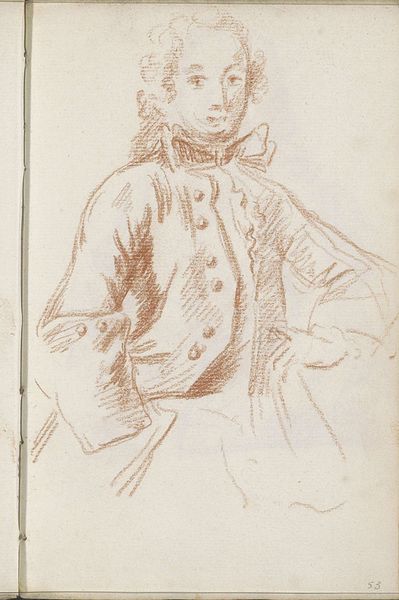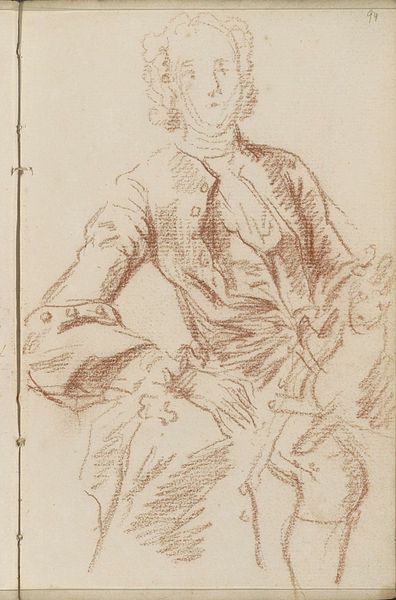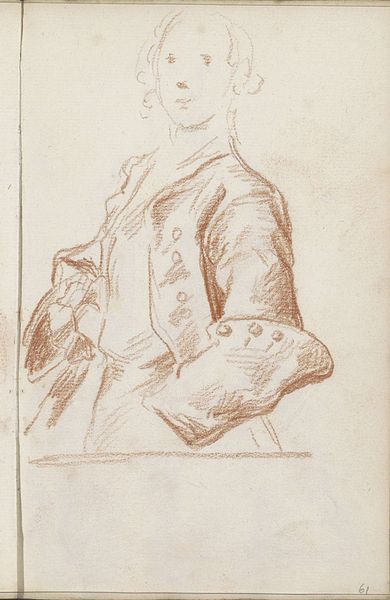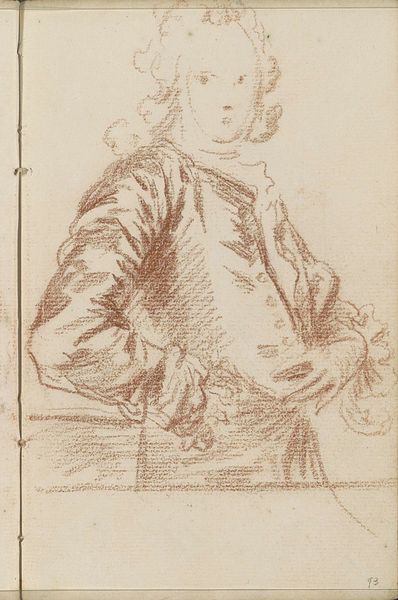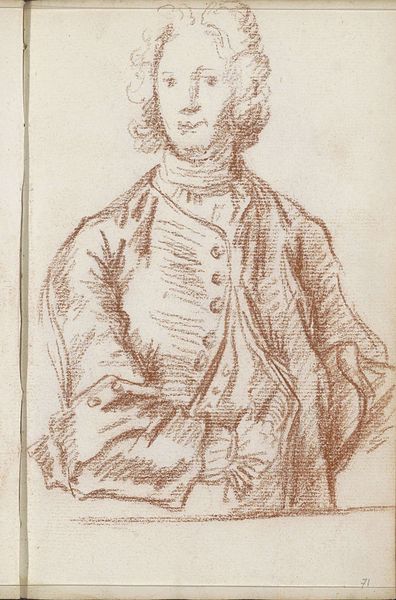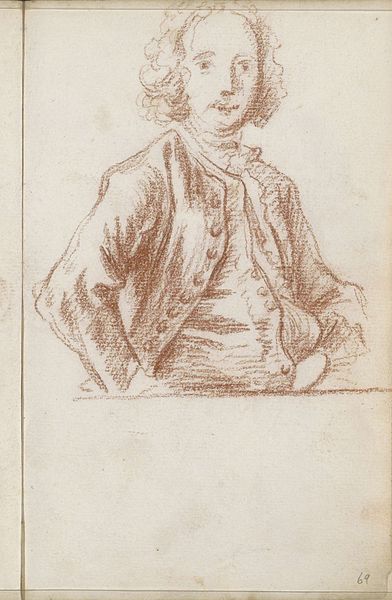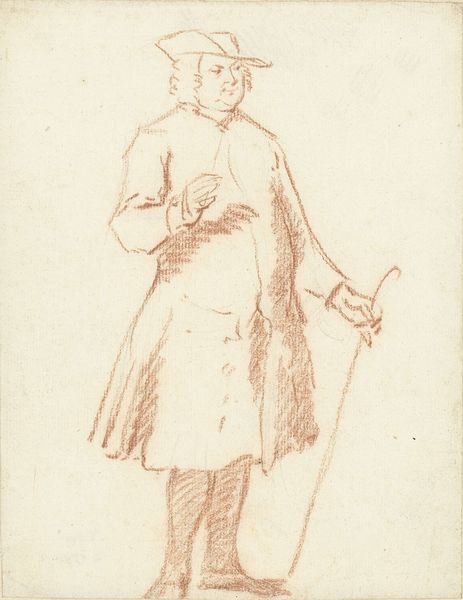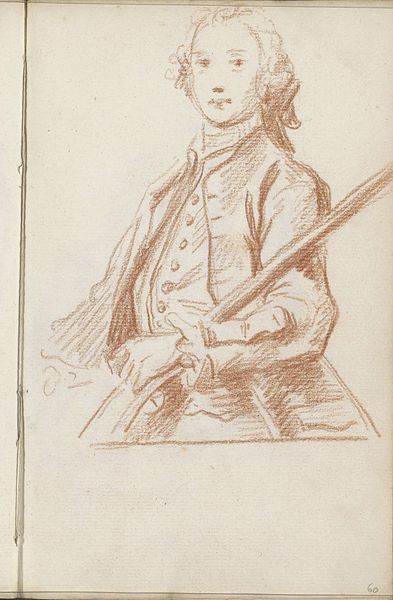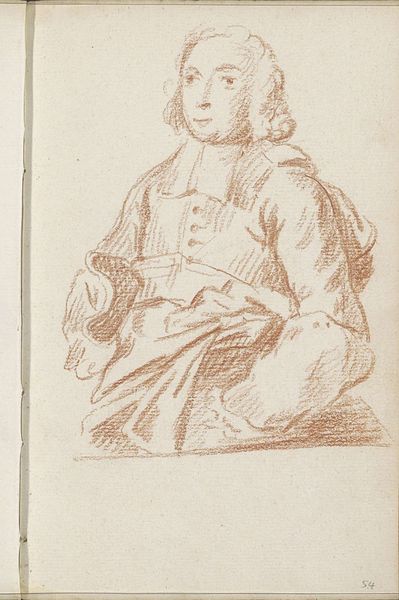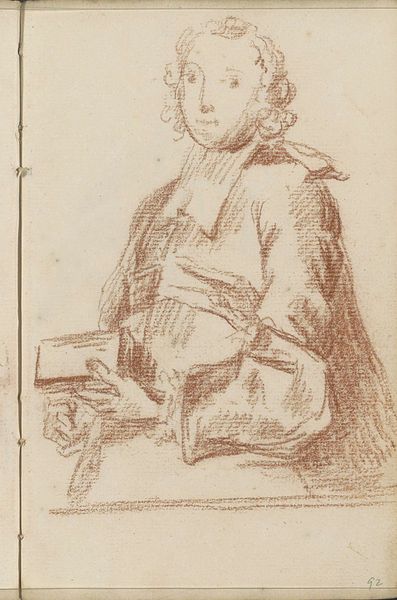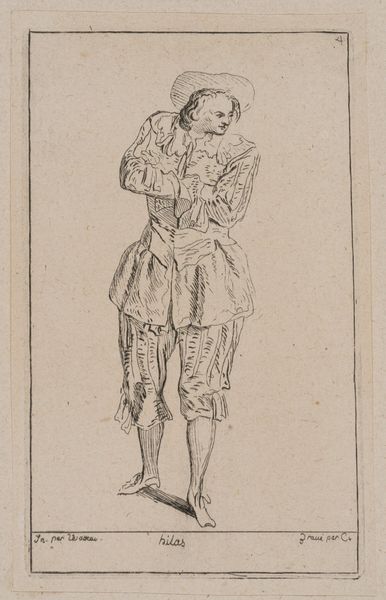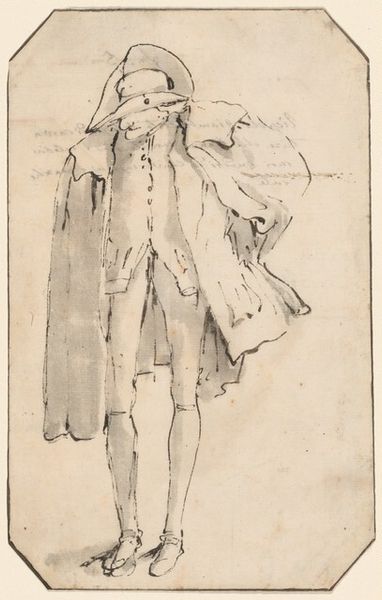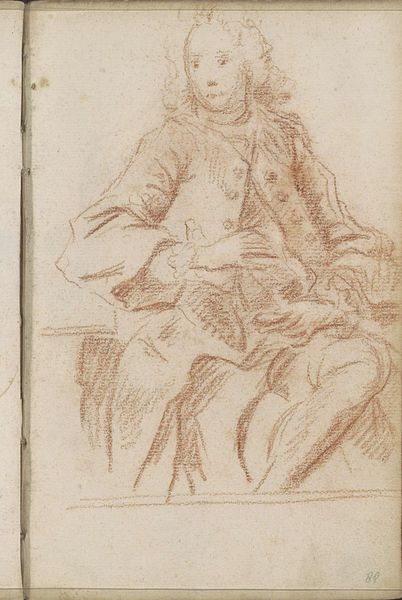
drawing, pencil
#
portrait
#
drawing
#
pen sketch
#
pencil sketch
#
pen-ink sketch
#
pencil
#
sketchbook drawing
#
genre-painting
#
rococo
Copyright: Rijks Museum: Open Domain
Curator: Standing before us, we have a drawing from Petrus Johannes van Reysschoot, created sometime between 1710 and 1772. It’s titled "Standing Man with Hand on Hip" and appears to be executed in pencil and ink. Editor: There’s a certain lightness to it, isn't there? It feels quick, like a fleeting observation. The man almost seems to be caught mid-gesture, perhaps considering something. Curator: Absolutely. Reysschoot was working within a Rococo framework, and his sketches often served as preliminary studies. Understanding the social context of that era is vital here; this is a period defined by its aristocratic tastes. Note how this man adopts an effortless posture, indicative of status. How might we situate such casual presentation within a system of societal expectations? Editor: I’m struck by how informal it is, really. Though the subject clearly belongs to the upper classes – what with the powdered wig and embellished coat - the execution lacks a certain formality. There is an intimate character revealed by its medium: sketching often being more informal. Perhaps intended for a private audience? It speaks volumes about artistic production during that period. Curator: I agree. Consider too, the limitations placed upon various classes, especially how their representation was so rigidly coded. I believe we might also ask how does an image like this reflect broader dialogues of power at this historical juncture? Editor: Right. Was he creating for wealthy patrons? If so, how did he manage to balance aesthetic conventions with his personal interpretation? The Rococo era did embrace individuality, yet these expressions were often managed to keep social hierarchies intact. The pose may indicate a power dynamic at play: how does his posture convey his personal status, but how does the informality of its drawing style democratise, even subtly challenge expectations? Curator: I'm always fascinated by the interplay between public display and personal agency. The "Standing Man" provides an opportunity to engage in debates that still affect today’s artists and public sphere perceptions around it, regarding societal roles within artistry. Editor: Examining art is so fascinating because, for example here, it offers insight into individual and group behavior or tastes within society as seen by and even sometimes constructed via artists and studios like that of Reysschoot, enabling the artist’s creative vision. Curator: Precisely, and examining drawings like this will always be an adventure.
Comments
No comments
Be the first to comment and join the conversation on the ultimate creative platform.
